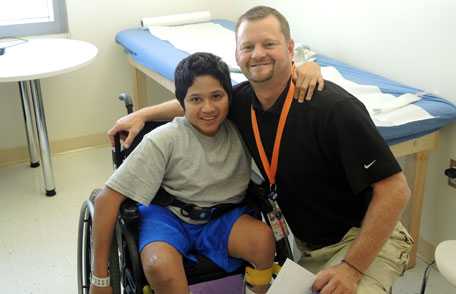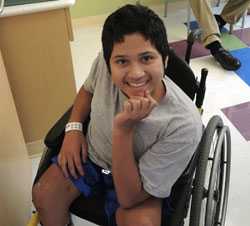National Spina Bifida Patient Registry
 For the first time, CDC reports findings from the National Spina Bifida Patient Registry. CDC is the only organization in this country conducting broad research based on information from multiple spina bifida clinics.
For the first time, CDC reports findings from the National Spina Bifida Patient Registry. CDC is the only organization in this country conducting broad research based on information from multiple spina bifida clinics.
October is National Spina Bifida Awareness Month. Each year about 1,500 babies are born with spina bifida in the United States. With our partners, the National Center on Birth Defects and Developmental Disabilities (NCBDDD), Centers for Disease Control and Prevention (CDC) conducts research that enables every person living with spina bifida to reach their full potential. For the first time, CDC reports findings from the National Spina Bifida Patient Registry.
What is the National Spina Bifida Patient Registry?
NCBDDD funds and manages the National Spina Bifida Patient Registry. The Registry keeps track of children and adults with spina bifida and the care they receive at certain spina bifida clinics. CDC is the only organization in this country conducting such a broad range of public health research using information from multiple spina bifida clinics. Data collected from the Registry find that among patients:
- Registry participants are roughly an equal number of males and females.
- Most have a specific type of spina bifida called myelomeningocele.
- There are more non-Hispanic whites in the Registry than other population groups.
- Just over half are community ambulators, meaning they walk indoors and outdoors for most activities and may need crutches or braces or both. They use a wheelchair only for long trips out of the community.
- Of those with impaired bladder or bowel function, most are incontinent.

The National Spina Bifida Patient Registry includes information on the mobility status of more than 3300 participants from 19 spina bifida clinics.
Why is this work important?
Healthcare professionals who see patients with spina bifida use a variety of treatments. Documenting this information from many patients at different clinics helps researchers determine what treatments and services are associated with improved health outcomes. NCBDDD then works with different organizations across the country to make sure all health care professionals who see patients with spina bifida are aware of these effective treatment options. This process makes it more likely that everyone living with spina bifida will receive the same high level of care.
What information is coming next from the Registry?
NCBDDD staff and the agency's research partners will be publishing a scientific paper analyzing information about patients seen at the first ten clinics included in the Registry. This information is from each patient's initial visit to the clinic. A second scientific paper will look at the connections between sociodemographic characteristics and outcomes such as continence, ambulation, and pressure sores.
- Page last reviewed: October 20, 2014
- Page last updated: October 20, 2014
- Content source:
- National Center on Birth Defects and Developmental Disabilities
- Page maintained by: Office of the Associate Director for Communication, Digital Media Branch, Division of Public Affairs




 ShareCompartir
ShareCompartir